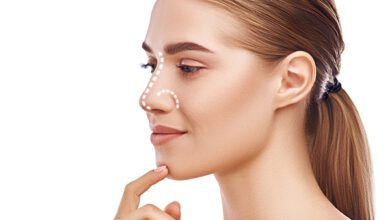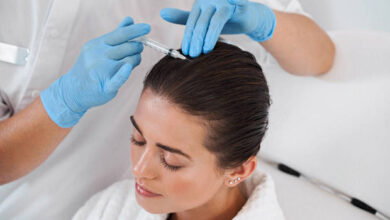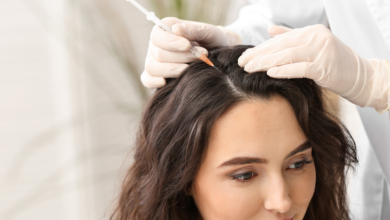
Discover the transformative power of blepharoplasty, a cutting-edge procedure that offers a refreshed gaze for the modern Dubai woman. Through precise surgical techniques, this innovative treatment caters to the unique needs of individuals seeking to enhance the appearance of their upper or lower eyelids. By eliminating excess skin, reducing puffiness, and rejuvenating the eye area, blepharoplasty promises to restore a youthful and radiant look. Step into the world of cosmetic advancements and embrace a newfound confidence that radiates from your eyes.
Overview of Blepharoplasty
Blepharoplasty is a surgical procedure that aims to rejuvenate and enhance the appearance of the eyelids. It involves removing excess skin, fat, and muscle from the upper and/or lower eyelids, resulting in a more youthful, refreshed look. This procedure is commonly performed to address issues such as under-eye bags, droopy eyelids, and puffiness, which may be caused by aging, genetics, or lifestyle factors.
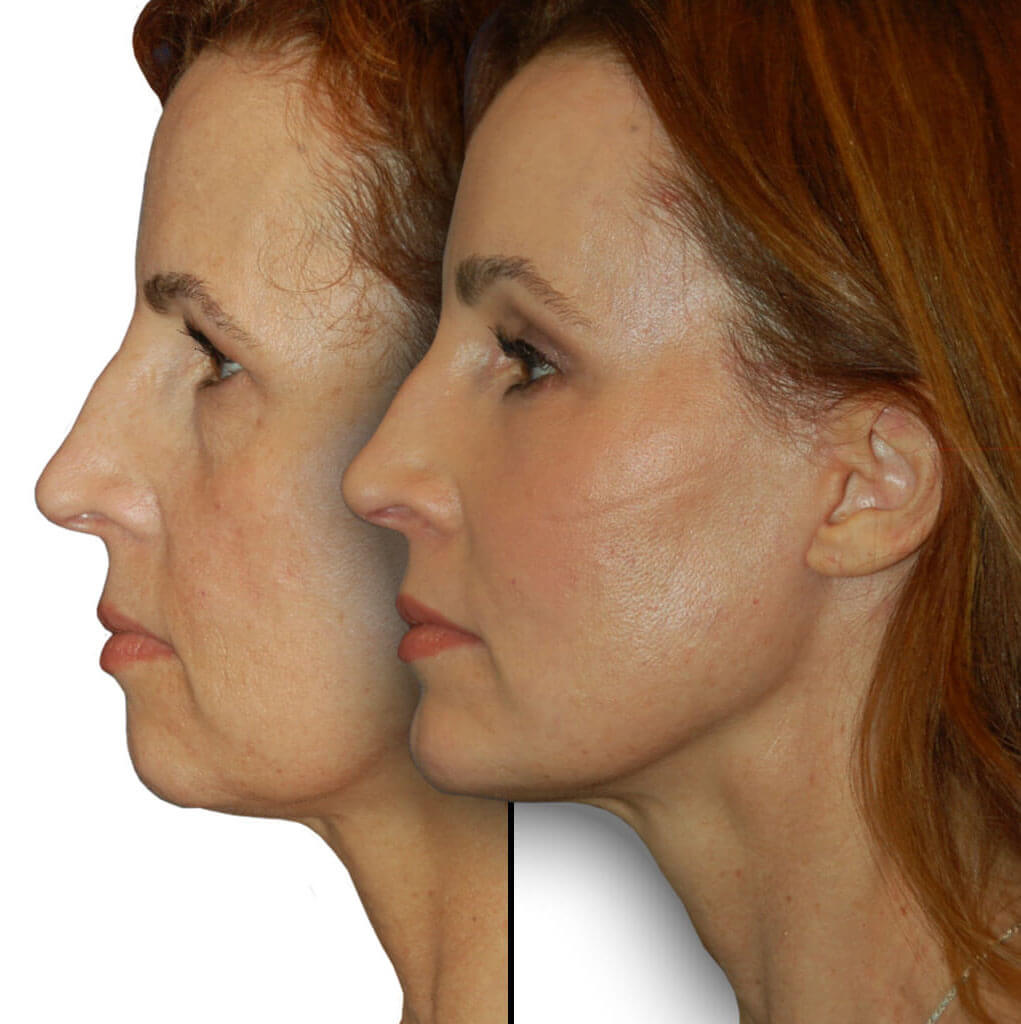
Definition and Purpose of Blepharoplasty
Blepharoplasty, also known as eyelid surgery, is a cosmetic procedure that serves both aesthetic and functional purposes. The main goal of the surgery is to remove excess skin and fat, tighten the underlying muscles, and improve the overall appearance of the eyelids. By addressing sagging eyelids, under-eye bags, and droopy skin, blepharoplasty can help individuals achieve a more rejuvenated and youthful appearance.
Types of Blepharoplasty
Blepharoplasty can be performed on either the upper eyelid, lower eyelid, or both. Each type of blepharoplasty targets specific concerns and requires different surgical techniques.
- Upper Eyelid Blepharoplasty: This procedure involves the removal of excess skin, fat, and muscle from the upper eyelids. It can correct droopy eyelids, improve vision obstruction, and create a more open and alert appearance.
- Lower Eyelid Blepharoplasty: This type of blepharoplasty targets under-eye bags, puffiness, and sagging skin in the lower eyelids. It involves the removal or repositioning of excess fat and the tightening of loose skin.
- Combined Upper and Lower Blepharoplasty: Some individuals may require both upper and lower eyelid surgery to achieve optimal results. Combined blepharoplasty addresses multiple concerns simultaneously, providing a comprehensive rejuvenation of the entire eye area.
Candidates for Blepharoplasty
Blepharoplasty is suitable for individuals who are bothered by the appearance of their eyelids and wish to achieve a more youthful and refreshed look. Candidates for this procedure may experience the following issues:
- Excess skin obscuring the natural fold of the upper eyelids
- Puffy appearance or bags under the eyes
- Droopy or sagging lower eyelids
- Impaired peripheral vision due to sagging upper eyelids
- Fine lines, wrinkles, and creases around the eyes
Ideal candidates for blepharoplasty are in good overall health and have realistic expectations about the results of the procedure. It is important to consult with a qualified surgeon to determine if you are a suitable candidate for the surgery.
Benefits of Blepharoplasty
Blepharoplasty offers numerous benefits for individuals seeking to enhance their appearance and address specific concerns related to their eyelids. Some of the key benefits of this procedure include:
- Improvement in the overall appearance of the eyes, making them look more youthful and alert
- Reduction or elimination of under-eye bags and puffiness
- Correction of droopy or sagging eyelids, which may enhance vision and provide a more balanced facial appearance
- Smoothing of fine lines, wrinkles, and creases around the eyes
- Enhancement of self-confidence and self-esteem
- Long-lasting results that can help individuals maintain a rejuvenated gaze for years to come
It is important to note that individual results may vary, and the outcomes of blepharoplasty depend on various factors such as the individual’s anatomy, skin elasticity, and healing process.
Preparation for Blepharoplasty
Preparation for blepharoplasty is a crucial step in ensuring a safe and successful surgical experience. It involves several important considerations, including choosing a qualified surgeon, attending an initial consultation, undergoing a medical evaluation, discussing expectations, and following pre-operative instructions.
Choosing a Qualified Surgeon
Selecting a qualified and experienced surgeon is of utmost importance when considering blepharoplasty or any other cosmetic procedure. Take the time to research different surgeons and their credentials. Look for board-certification, memberships in professional organizations, and positive patient testimonials. It is also helpful to review before and after photos of previous patients to get an idea of the surgeon’s skill and aesthetic style.
Initial Consultation
The initial consultation with a surgeon is an opportunity to discuss your concerns, goals, and expectations for the procedure. During this consultation, the surgeon will evaluate your eyelids, assess your candidacy for blepharoplasty, and provide recommendations based on your individual needs. This is also a good time to ask any questions you may have and gain a clear understanding of the procedure, including the potential risks and benefits.
Medical Evaluation
Before undergoing blepharoplasty, a comprehensive medical evaluation is necessary to ensure that you are in good overall health and can tolerate the surgery. This evaluation may include a review of your medical history, physical examination, and any necessary tests or laboratory work. The results of this evaluation will help determine your eligibility for the procedure and ensure your safety during the surgery and recovery.
Discussion of Expectations
During the consultation, it is crucial to discuss your expectations openly and honestly with your surgeon. By clearly communicating your goals and desires, the surgeon can tailor the procedure to meet your specific needs. Managing expectations is important, as blepharoplasty can provide significant improvement but may not achieve perfection. Your surgeon will explain the anticipated outcomes and address any concerns or limitations based on your individual anatomy and skin condition.
Pre-operative Instructions
Prior to the surgery, your surgeon will provide specific pre-operative instructions to help you prepare for the procedure. These instructions may include guidelines on dietary restrictions, medication adjustments, smoking cessation, and avoiding certain activities or substances that could interfere with the surgery or recovery process. It is important to carefully follow these instructions to ensure the best possible results and minimize any risks or complications.
The Blepharoplasty Procedure
The blepharoplasty procedure itself involves several important considerations, including the type of anesthesia used, the specific techniques employed, the duration of the procedure, and the expected outcomes. Understanding these aspects can help individuals feel more prepared and confident about their upcoming surgery.
Anesthesia Options
Blepharoplasty can be performed using either local anesthesia with sedation or general anesthesia, depending on the complexity of the procedure and the patient’s preference. Local anesthesia with sedation allows the patient to relax comfortably while the surgeon numbs the area with a local anesthetic. General anesthesia, on the other hand, induces sleep throughout the entire surgery. The choice of anesthesia will be discussed and determined during the initial consultation and will depend on various factors, including the extent of the surgery and the patient’s overall health.
Upper Eyelid Blepharoplasty
During upper eyelid blepharoplasty, the surgeon makes incisions along the natural creases of the eyelids. Through these incisions, excess skin, fat, and muscle are removed or repositioned as needed. The incisions are then closed with fine sutures to minimize scarring. The procedure typically takes about one to two hours, depending on the complexity and extent of the surgery.
Lower Eyelid Blepharoplasty
Lower eyelid blepharoplasty can be performed using either an external or transconjunctival approach. With an external approach, an incision is made just below the lower lash line, allowing the surgeon to remove or redistribute excess fat and tighten loose skin. The incision is closed with sutures or surgical tape. In the transconjunctival approach, the incision is made inside the lower eyelid, and excess fat is removed or repositioned. This technique does not involve any noticeable external incisions and is more suitable for individuals with minimal excess skin.
Combined Upper and Lower Blepharoplasty
In cases where both the upper and lower eyelids require treatment, a combined blepharoplasty approach may be necessary. This allows for a comprehensive rejuvenation of the entire eye area. The surgery involves a combination of the techniques used in upper and lower eyelid blepharoplasty, tailored to the individual needs and goals of the patient. The duration of the combined procedure will depend on the complexity of the surgery but typically ranges from two to four hours.
Duration of the Procedure
The duration of the blepharoplasty procedure depends on several factors, including the extent of the surgery, the techniques used, and any additional procedures performed simultaneously. On average, blepharoplasty can take anywhere from one to four hours. It is important to note that these are approximate times and may vary for each patient. During the initial consultation, your surgeon will provide a more accurate estimate based on your specific case.
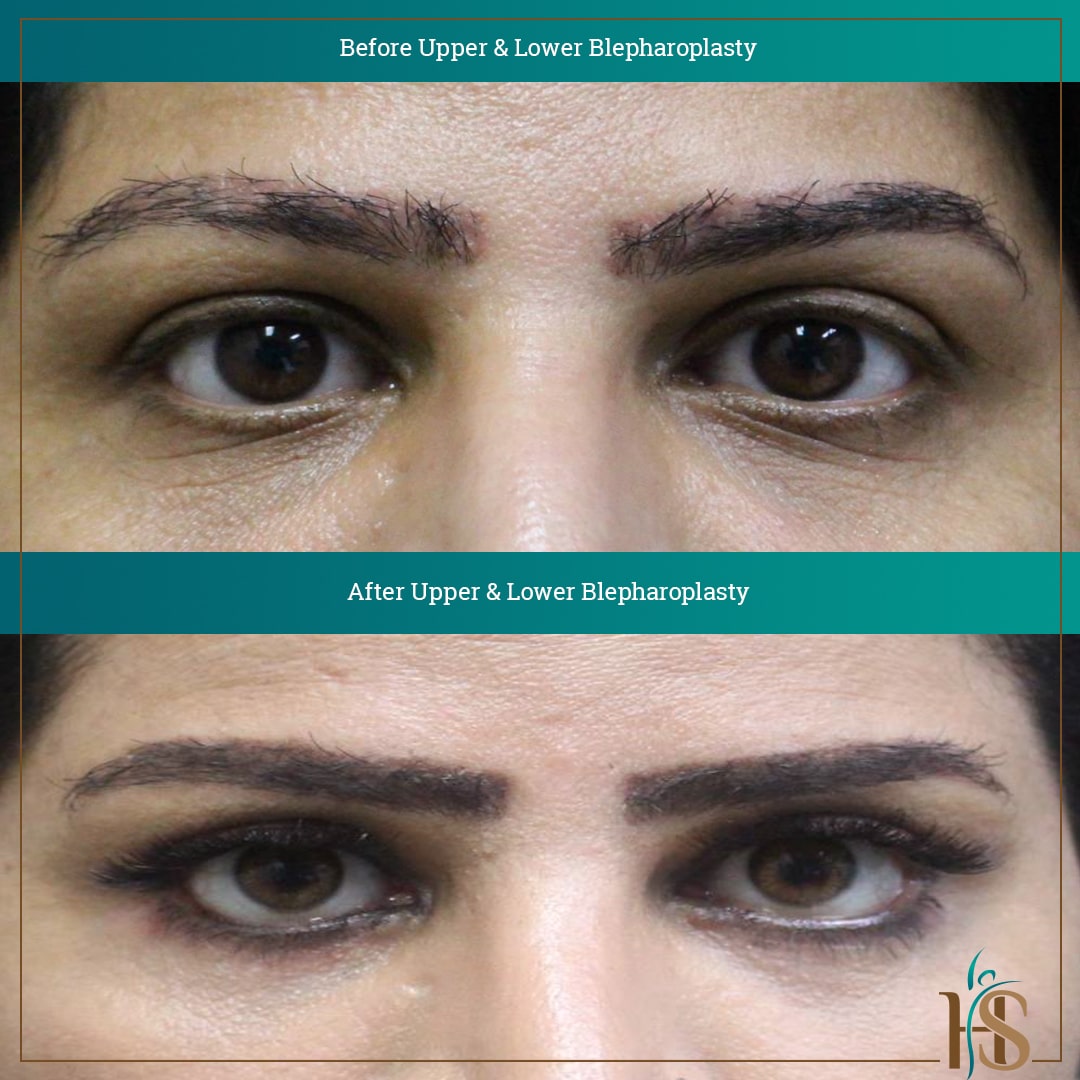
Expected Outcomes
The expected outcomes of blepharoplasty can vary depending on individual factors such as age, skin elasticity, and personal goals. Generally, the procedure results in a more rejuvenated appearance of the eyelids, with reduced fine lines, wrinkles, and skin laxity. Under-eye bags and puffiness are typically improved, and the overall balance and symmetry of the eye area are enhanced. Results are expected to be long-lasting, but the natural aging process will continue, and additional procedures may be desired in the future to maintain the desired aesthetic.
Recovery and Aftercare
The recovery period after blepharoplasty is an essential part of the process, as it allows for proper healing and optimal results. During this time, it is important to follow post-operative care instructions, take medications as prescribed, attend follow-up appointments, and be mindful of swelling and bruising. Understanding the recovery process can help individuals plan accordingly and ensure a smooth and successful recuperation.
Post-operative Care
After the surgery, your surgeon will provide specific instructions on how to care for your eyes and promote optimal healing. This may include guidelines on cleaning the incision sites, applying prescribed ointments or eye drops, and avoiding certain activities or substances that could delay healing. It is crucial to carefully follow these instructions to minimize the risk of infection and support a smooth recovery.
Medication and Pain Management
Pain and discomfort are common in the initial days following blepharoplasty. Your surgeon may prescribe pain medication or recommend over-the-counter pain relievers to help manage any discomfort. It is important to take the prescribed medication as directed and avoid any medications or substances that could interfere with the healing process.
Follow-up Appointments
Post-operative appointments are scheduled to monitor your healing progress and ensure that the desired outcomes are being achieved. During these appointments, your surgeon will evaluate your incision sites, remove any sutures if needed, and address any concerns or questions you may have. It is essential to attend these follow-up appointments as scheduled to optimize your recovery and address any potential issues promptly.
Swelling and Bruising
Swelling and bruising are common side effects of blepharoplasty and may vary in severity depending on the individual. These symptoms typically peak within the first few days after surgery and gradually subside over the following weeks. Your surgeon may recommend cold compresses or other remedies to help reduce swelling and bruising. It is important to be patient during this stage of recovery, as it can take several weeks for these symptoms to fully resolve.
Returning to Normal Activities
The exact timeline for returning to normal activities after blepharoplasty varies for each individual. Most patients can expect to resume work and light activities within a week to ten days, depending on the extent of the surgery and the rate of healing. Strenuous activities, such as exercise and heavy lifting, should be avoided for at least two to four weeks or until cleared by your surgeon. It is essential to follow the specific guidelines provided by your surgeon to prevent complications and optimize your recovery.
Potential Risks and Complications
Although blepharoplasty is generally safe and effective, like any surgical procedure, it carries inherent risks and potential complications. Understanding these risks can help individuals make an informed decision and take appropriate steps to minimize their occurrence.
General Risks of Surgery
As with any surgical procedure, there are general risks and potential complications associated with blepharoplasty. These may include adverse reactions to anesthesia, infection, bleeding, poor wound healing, scarring, and asymmetry. Your surgeon will discuss these risks with you during the initial consultation and take the necessary precautions to minimize their occurrence.
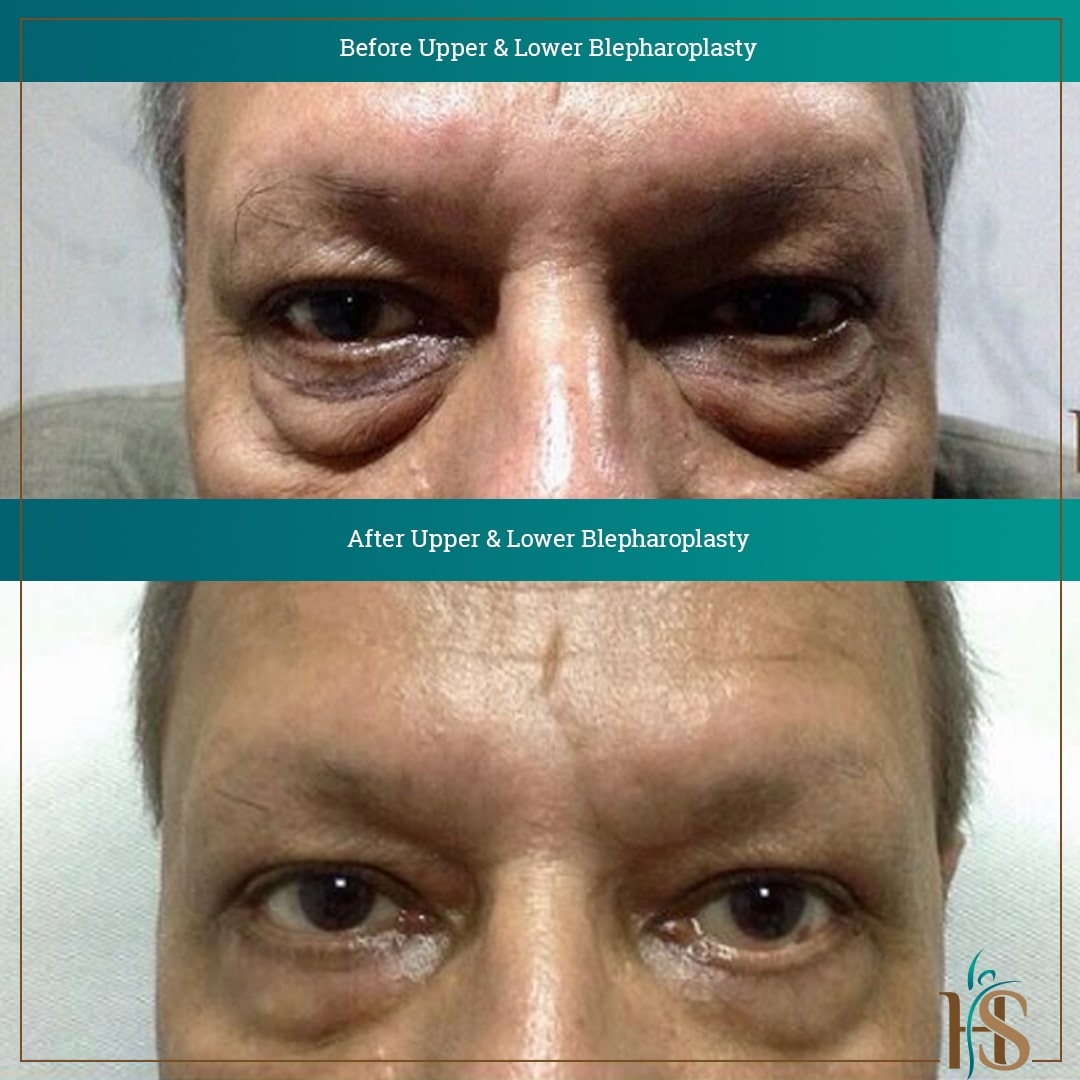
Specific Risks of Blepharoplasty
Blepharoplasty poses specific risks and potential complications that are related to the delicate nature of the eye area. These can include dry eyes, temporary or permanent changes in vision, difficulty closing the eyes completely, ectropion (outward rolling of the lower eyelids), and ptosis (drooping of the eyelids). These risks are relatively rare and can often be minimized by selecting a qualified surgeon and following all pre-operative and post-operative instructions.
Potential Complications
In rare cases, complications may occur during or after the blepharoplasty procedure. These can include infections, hematoma (collection of blood under the skin), seroma (accumulation of fluid), skin discoloration, excessive scarring, delayed wound healing, and nerve damage. It is important to consult with a qualified surgeon who can effectively assess and minimize the risks associated with the surgery.
Steps to Minimize Risks
To minimize the risks and potential complications associated with blepharoplasty, it is essential to choose a qualified surgeon with extensive experience in eyelid surgery. Follow all pre-operative and post-operative instructions carefully, including taking any prescribed medications and attending all follow-up appointments. Be open and honest with your surgeon about your medical history, habits, and expectations. By adhering to these guidelines and being proactive, you can help ensure a safe and successful blepharoplasty experience.
Cost and Financial Considerations
The cost of blepharoplasty can vary depending on several factors, including the complexity of the surgery, the surgeon’s experience and reputation, geographic location, and additional fees such as anesthesia and facility charges. Understanding the factors that affect the cost and exploring payment options can help individuals plan and budget for the procedure effectively.
Factors Affecting the Cost of Blepharoplasty
The cost of blepharoplasty can be influenced by various factors, including:
- Complexity of the surgery: The extent and complexity of the surgery, such as whether it involves the upper or lower eyelids or both, can affect the overall cost.
- Surgeon’s expertise and reputation: The experience and skill level of the surgeon may impact the cost. Established and reputable surgeons with a high demand for their services may charge higher fees.
- Geographic location: The cost of living and healthcare services in a specific geographic area can influence the cost of blepharoplasty. Major cities and regions with a higher cost of living generally have higher fees.
- Anesthesia and facility charges: These additional fees, including the cost of anesthesia and the surgical facility, contribute to the overall cost of the procedure.
Health Insurance Coverage
In many cases, blepharoplasty is considered a cosmetic procedure and is not covered by health insurance. However, if the surgery is deemed medically necessary to improve impaired vision caused by sagging eyelids, health insurance may provide partial or full coverage. It is important to check with your insurance provider and obtain any necessary pre-authorization or documentation to determine if your blepharoplasty may be covered.
Payment Options
If your blepharoplasty is not covered by insurance, various payment options are available to help make the procedure more affordable. Many surgeons offer flexible payment plans, allowing patients to pay for the surgery in installments. Additionally, medical financing companies provide loans specifically for cosmetic procedures, with options for low or no-interest financing. It is essential to explore these options and discuss payment plans with your surgeon to find the best solution that fits your budget and financial situation.
Budgeting for the Procedure
When budgeting for blepharoplasty, it is important to consider the overall cost of the procedure, including surgeon’s fees, anesthesia fees, facility charges, and any additional costs such as medications and follow-up appointments. Researching and obtaining quotes from multiple surgeons can help you get a clear idea of the average cost in your area and make an informed decision. Remember to also factor in any potential time off work or additional expenses related to the recovery period.
Frequently Asked Questions
To provide a comprehensive understanding of blepharoplasty, here are answers to frequently asked questions that individuals considering the procedure may have:

What is the ideal age for blepharoplasty?
There is no specific ideal age for blepharoplasty, as the decision to undergo the procedure is highly individual. The appropriate age for blepharoplasty depends on the individual’s concerns, goals, and overall health. Most individuals who undergo blepharoplasty are in their late thirties or older, as this is when signs of aging around the eyes typically become more pronounced. However, in some cases, younger individuals may benefit from blepharoplasty to correct genetic or asymmetry issues.
Is blepharoplasty a painful procedure?
While discomfort and mild pain may be experienced during the initial recovery phase, blepharoplasty is generally well-tolerated with proper pain management. Your surgeon will provide pain medication or recommend over-the-counter pain relievers to help manage any discomfort. It is essential to follow the prescribed pain management regimen and report any severe or persistent pain to your surgeon.
Can blepharoplasty correct droopy eyebrows?
Blepharoplasty primarily addresses concerns related to the eyelids, such as excess skin, fat, and muscle. While it can provide some degree of brow elevation, it is not specifically designed to correct droopy eyebrows. If you have concerns about droopy eyebrows, your surgeon may recommend combining blepharoplasty with a brow lift procedure to achieve optimal results.
Will there be visible scarring after the surgery?
Like any surgical procedure, blepharoplasty will result in some scarring. However, a skilled surgeon will strategically place incisions along the natural creases of the eyelids, making the scars as inconspicuous as possible. Over time, the scars will generally fade and become less noticeable. Following proper post-operative care instructions, such as avoiding sun exposure and diligently applying scar-minimizing ointments, can help optimize the healing process and minimize visible scarring.
How long is the recovery period?
The recovery period after blepharoplasty can vary depending on individual factors such as the extent of the surgery, healing ability, and adherence to post-operative care instructions. In general, patients can expect initial swelling and bruising to subside within the first two to three weeks. Most individuals can resume work and light activities within seven to ten days. Strenuous activities, such as exercise and heavy lifting, should be avoided for several weeks. It is important to follow your surgeon’s specific instructions to ensure a smooth and successful recovery.
Choosing the Right Surgeon in Dubai
Choosing the right surgeon for your blepharoplasty in Dubai is a crucial step in achieving safe and satisfactory results. To help guide you in this process, here are some important considerations:
Importance of Research and Referrals
Take the time to thoroughly research different surgeons, their credentials, and their experience with blepharoplasty. Look for board-certification, memberships in professional organizations, and evidence of specialized training in cosmetic and reconstructive surgery. Personal referrals from family, friends, or trusted healthcare professionals can also provide valuable insights and recommendations.
Checking Surgeon Credentials
When researching potential surgeons, it is essential to verify their credentials and qualifications. Look for surgeons who are board-certified in plastic surgery or ophthalmology, as these certifications indicate that the surgeon has met specific educational and training requirements. Additionally, check for any disciplinary actions or malpractice claims against the surgeon and ensure that their license is valid and in good standing.
Reviewing Before and After Photos
Reviewing before and after photos of previous patients can give you a better idea of the surgeon’s skill and aesthetic style. Pay attention to patients with similar concerns or goals to yours, as this can help you assess the surgeon’s ability to achieve the desired outcomes. Reputable surgeons are often proud to showcase their work and willingly provide access to before and after photos upon request.
Reading Patient Testimonials
Patient testimonials and online reviews can offer valuable insights into the surgeon’s approach, patient satisfaction levels, and overall experience. Websites, forums, and social media platforms dedicated to cosmetic surgery can be excellent resources for gathering such information. It is important to consider a wide range of opinions and reviews while keeping in mind that individual experiences may vary.
Scheduling Consultations
Once you have compiled a list of potential surgeons, schedule consultations to meet with them in person. During these consultations, assess the surgeon’s communication style, willingness to answer questions, and the overall comfort level you feel with them. Ask about their experience with blepharoplasty, their approach to the procedure, and what results you can reasonably expect. Use this opportunity to discuss your concerns, goals, and any specific considerations you may have.
Alternative Procedures and Non-surgical Options
While blepharoplasty is an effective surgical option for rejuvenating the eyes, there are also alternative procedures and non-surgical options available for individuals seeking less invasive solutions or additional enhancement. These alternatives can provide temporary improvements or address specific concerns that may not require surgical intervention.
Eyelid Lift with Botox
For individuals with mild to moderate skin laxity and minimal excess fat, an eyelid lift with botulinum toxin (Botox) can provide subtle rejuvenation. Botox injections can help relax the muscles responsible for creating wrinkles and lines around the eyes, resulting in a smoother and more refreshed appearance. While the effects are temporary and last around three to six months, this non-surgical option can be a viable alternative for those who wish to avoid surgery.
Laser Eyelid Rejuvenation
Laser eyelid rejuvenation, also known as laser blepharoplasty, is a non-surgical procedure that uses laser technology to tighten the skin and reduce the appearance of fine lines and wrinkles around the eyes. The procedure stimulates collagen production and improves skin texture, resulting in a more youthful and rejuvenated appearance. Laser eyelid rejuvenation typically requires multiple treatment sessions, and the results can last for several months to a year.
Chemical Peel for Periorbital Rejuvenation
Chemical peels are another non-surgical option that can improve the appearance of the periorbital area. A chemical solution is applied to the skin, causing controlled exfoliation and the removal of damaged surface layers. This process stimulates collagen production, reduces fine lines and wrinkles, and improves skin tone and texture. Chemical peels can target specific concerns, ranging from mild to deep peels, depending on the individual’s needs and desired outcomes.
Thread Lift for Eyelid Tightening
A thread lift is a non-surgical procedure that involves the insertion of dissolvable threads into the skin to lift and tighten sagging tissues. Thread lifts can be used to target the upper eyelids and provide a subtle lift, resulting in a more youthful and refreshed appearance. The threads stimulate collagen production and gradually dissolve over time. While the effects of a thread lift are not as long-lasting as surgery, it offers a non-surgical alternative for individuals with mild to moderate skin laxity.
Non-surgical Options for Minor Concerns
For individuals with minor concerns such as under-eye bags or puffiness, non-surgical options such as dermal fillers or specialized skincare products can provide temporary improvement. Dermal fillers can restore lost volume and reduce the appearance of hollowing or shadows under the eyes. Specialized skincare products containing ingredients like retinol, peptides, and hyaluronic acid can help improve skin quality and reduce fine lines and wrinkles. These non-surgical options are often used as complementary treatments or maintenance procedures to enhance the results of blepharoplasty or other surgical interventions.
Embracing a Refreshed Gaze
Blepharoplasty, whether surgical or non-surgical, offers numerous benefits for modern Dubai women seeking to enhance their appearance and address specific concerns related to their eyelids. By addressing sagging skin, under-eye bags, and puffiness, blepharoplasty can help individuals achieve a more refreshed and youthful appearance. This procedure can boost confidence and self-esteem, enhance facial appearance, achieve a balanced and rejuvenated gaze, and align with modern Dubai beauty standards. It is important to consult with a qualified surgeon to discuss your concerns, goals, and expectations, and determine if blepharoplasty or its alternatives are right for you. With proper research, preparation, and aftercare, you can embrace a refreshed gaze and enjoy the long-lasting results of this transformative procedure.
Unveiling The Art Of Rhinoplasty At Stylish.ae: Perfecting The Profile(Opens in a new browser tab)
The Secrets To Long-Lasting Eye Makeup(Opens in a new browser tab)
Stylish.ae’s Ultimate Guide To Eyeshadow Basics(Opens in a new browser tab)

